NYC’s Forgotten ‘War on Christmas Trees’
Discover how an obscure holiday crackdown affects festive street vendors today!


Last night’s first 2016 Presidential debate featured many memorable moments (and painful ones) between candidates Hillary Clinton and Donald Trump, but for infrastructure geeks like us, the likening of LaGuardia Airport to one in a “Third World Country” again by politicians made us laugh. LaGuardia Airport is like the unfashionable, uncool kid in your class that gets bullied and/or targeted for a makeover when convenient by the cool kids. But LaGuardia Airport, named after Fiorello H. LaGuardia, one of New York City’s more beloved mayors, also has some cool history that began way before Vice President Joe Biden or Trump called it Third World.
Here are 10 secrets and fun facts you probably didn’t know about LaGuardia Airport:
The Glen H. Curtiss Airport (later North Beach Airport), built in 1929, existed on the same property LaGuardia Airport is on now, but consisted of just three gravel runways and three hangars. The above image from 1931, which appeared on the Facebook group Old Images of New York is accompanied with information from Paul Freeman, including that the runways were illuminated, with the longest runway at 2,300 feet. The waterfront location was chosen to service both “landplanes and seaplanes,” a forerunner to the Marine Air Terminal at LaGuardia. When the city took over Glen H. Curtiss airport, it was renamed New York Municipal Airport–LaGuardia Field, and later LaGuardia Airport in 1939.
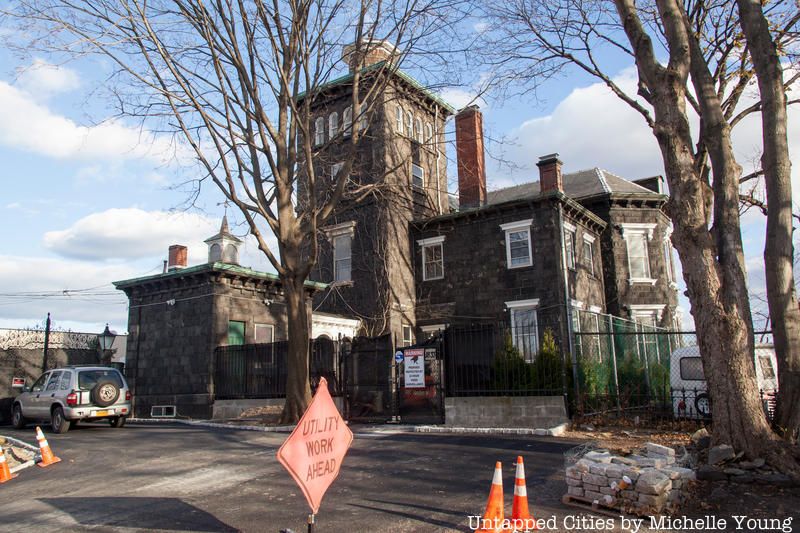
Before Glen H. Curtiss Airport, the site itself was the Gala Amusement park, a popular waterfront entertainment destination owned by the Steinway family, whose piano factory is still just nearby in Astoria. Going back even further, much of this land is landfill in the Bowery Bay. The area has gone through waves of change – an area of mansions for the wealthy, as factory housing from Steinway mixed with industrial use, to the full blown manufacturing and industrial zone it is now – including a ConEd plant, the Bowery Bay Wastewater Treatment Plant, and the Astoria Generating Company, another power plant.
 Yankee Clipper landing at Marine Air Terminal circa 1940. Photo by Hans Groenhoff (Smithsonian Institution) from Wikimedia Commons
Yankee Clipper landing at Marine Air Terminal circa 1940. Photo by Hans Groenhoff (Smithsonian Institution) from Wikimedia Commons
The Marine Air Terminal was built in 1939 to 1940 and is the only surviving American airport terminal which dates to “The Golden Age of Flying Boats,” as stated in the New York City landmark preservation report for the terminal. Seaplanes like the Yankee Clipper were luxurious affairs, with two floors, dining rooms and private compartments. They would land on water and be pulled in by boats, which is why the Marine Terminal was located on Bowery Bay. The Yankee Clippers were commissioned for use during World War II but land planes dominated shortly thereafter, making them obsolete.
Learn more and see more photos about the Marine Air Terminal.
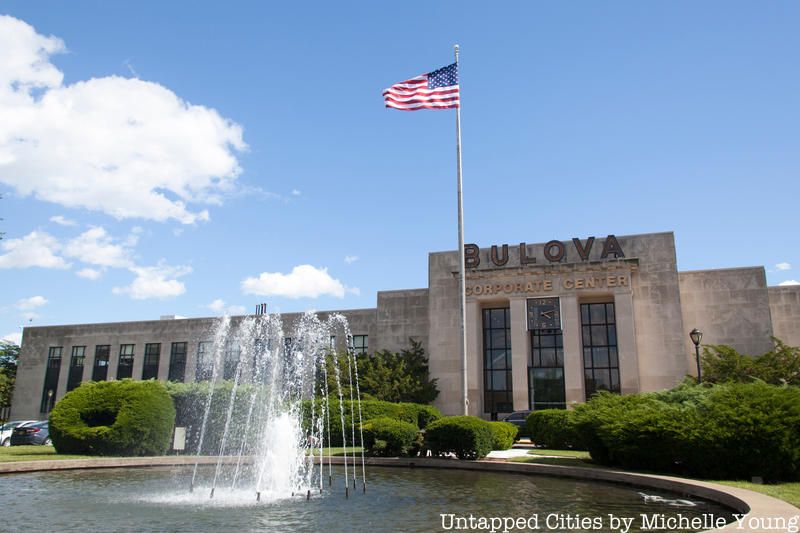
Just southwest of LaGuardia Airport, across Grand Central Parkway, was Holmes Airport, and when it first opened was the only airport within the city, an advertisement claims. The 220 acre tract, today home to the Bulova Corporate Center, included two hangars, an office, two gravel runways, a flight school and a Good Year blimp hangar.
Though Holmes Airport targeted mail planes and freight (and could transport mail to the city via pneumatic tubes allegedly), it was unable to halt or compete with LaGuardia. Holmes Airport would close a year after the opening of LaGuardia Airport in 1939.
Originally founded in 1949 as a mail and cargo carrier at LaGuardia Airport, New York Airways later converted to carrying passengers around New York City, making it the very first helicopter airline in the United States. It was initially well-received by the public because it allowed passengers to bypass New York’s notoriously congested streets without having to take the equally-frustrating subway, and allowed quick transfers between airports. A trip from LaGuardia to JFK Airport (known then as Idlewild Airport), took 10 minutes and cost $4.50. Imagine being able to skip the Belt Parkway so quickly today?
It also provided a cheaper alternative to riding taxis, making it a popular way to travel in and around the city. At its peak, it provided services in twenty-four airports, including JFK Airport (whose famous Worldport Terminal has recently been demolished). New York Airways was also involved in the fatal crash on the helipad atop the Pan Am Building in 1977. This combined with the cost of operation led to the closing of the company.
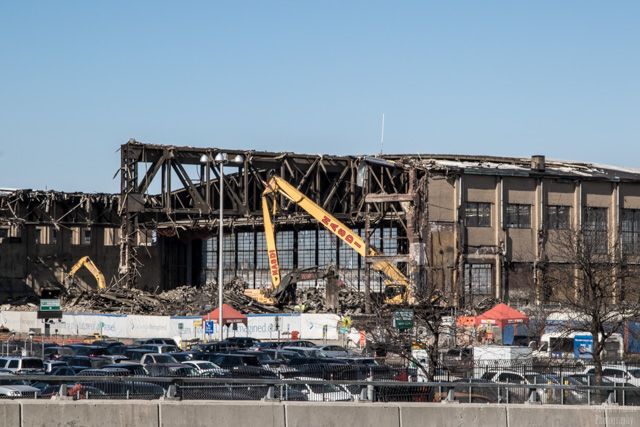
Photos b Dark Cyanide for Untapped Cities
In 2015, we reported on the demolition of jet age hangars 2 and 4 at LaGuardia Airport. The Port Authority had already spent three years on a plan to update LaGuardia Airport when Governor Cuomo announced a design competition for the airport. According to our source who worked on the redevelopment team at the time, this derailed the multi-year effort which is why to this day, most of the newness has been the large parking garages lining Grand Central Parkway.
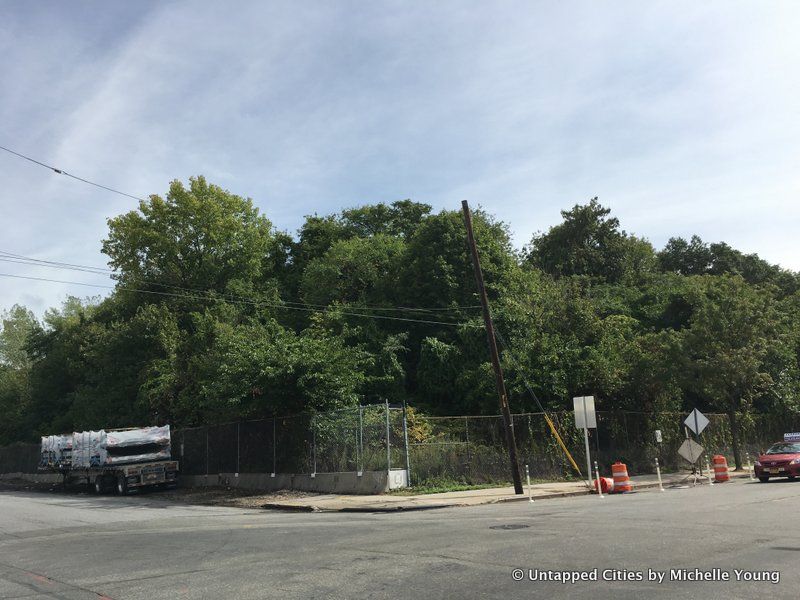
Ingraham’s Mountain next to LaGuardia Airport
Ingraham’s Mountain is a man-made topographic feature that sits within the airport’s leasehold, just to the west of LaGuardia Airport. The mountain was created from excavated material from construction of the third tube of the Lincoln Tunnel in 1936 and is 86 feet high. It’s similar in height to an 8-story building, higher than most of the buildings in the area.
Within the last few years, Ingraham’s Mountain was flattened 20 to 30 feet as a staging area and is now a parking lot for LaGuardia employees. You’ll see shuttle buses constantly plying the route between Ingraham’s Mountain and a service entrance off 19th Avenue.
This “mountain”sits right next to the Bowery Bay Wastewater Treatment Plant and while the original shoreline in this neighborhood has been filled in over time, there is evidence that part of this mountain sits on the original peninsula at Bowery Bay and was an “attractive location for settlement by Native Americans.”
Ingraham’s Mountain only appears within city documents like the LGA Airport Draft Environmental Assessment (where it’s mentioned 188 times) and a New York City MTA Transit study on a rail link for LGA Airport called “Mapping the Underground City.” On Google Maps, it looks just like a big park – except it’s inaccessible to the general public.
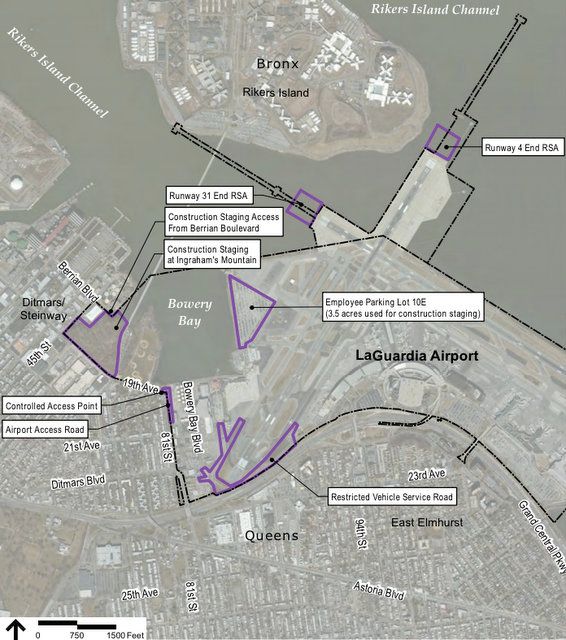
A Draft Environmental Assessment for LaGuardia Airport renovations was completed in August 2013 for public review and the public comment period ended a month later While the reason behind the extension is pretty standard airport safety stuff, it was the map that surprised us. One of the extended runways will basically touch Rikers Island, if the map in the report is accurate (hopefully not since it houses one of the world’s largest jails).
Back to the proposal, the 180 feet extension on two runways responds to a Congressional mandate to increase the size of runway safety areas for emergency purposes. The runways in question are currently built over the water and are shorter than the new standard.
The new runway safety areas will be built from “Engineered Material Arresting Systems” (EMAS), “customized cellular cement material, designed to crush under the weight of an aircraft and provide deceleration” because there isn’t enough space to create a “full dimension” runway safety area at LaGuardia.
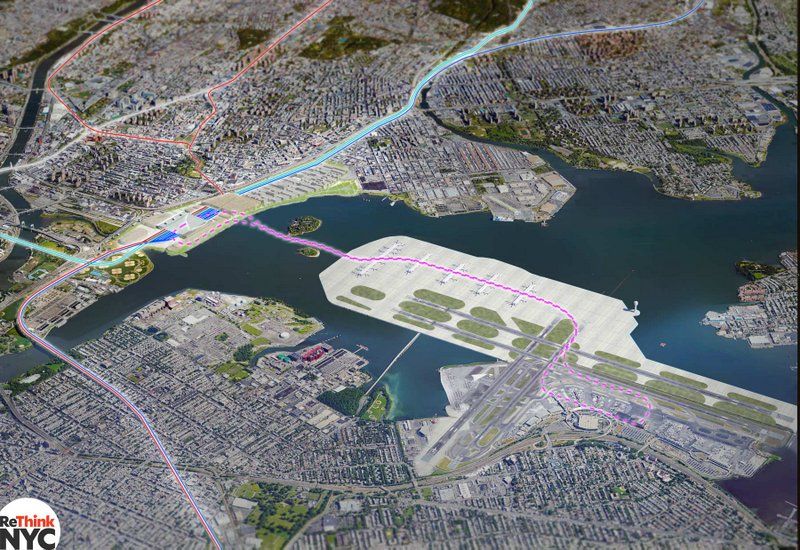
RethinkNYC was one of the proposals submitted in response to Governor Cuomo’s design competition for LaGuardia Airport. It’s not a proposal that is undergoing political consideration at the moment but it aimed to expand LaGuardia Airport and connect it to the Port Morris Trunk line to make it more accessible to mass transit. At the same time, it would require the closure of Rikers Island, a case gaining more and more support in recent years. ReThinkNYC is by Jim Venturi, the son of architects Denise Scott Brown and Robert Venturi, who among others, made famous the Long Island Duck.
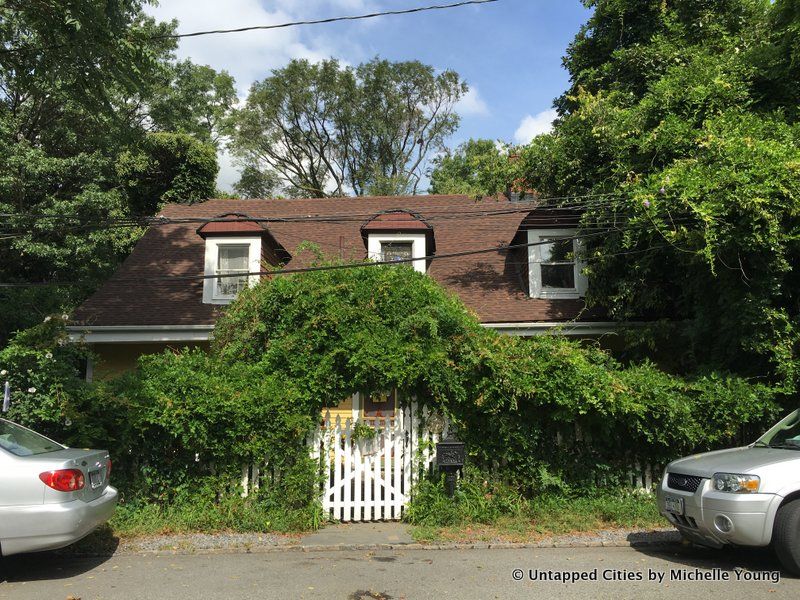
The Lent Rikers Smith Homestead just outside the boundaries of LaGuardia Airport is the oldest private residence in New York City, built in about 1655. It’s truly a wonderful Dutch remnant in an area that has become predominantly industrial. The house and adjoining property has been meticulously restored and maintained by its current occupant, Marion Duckworth Smith. See more photos of the home here.
Next, read about the Top 10 Secrets of JFK Airport.
Subscribe to our newsletter